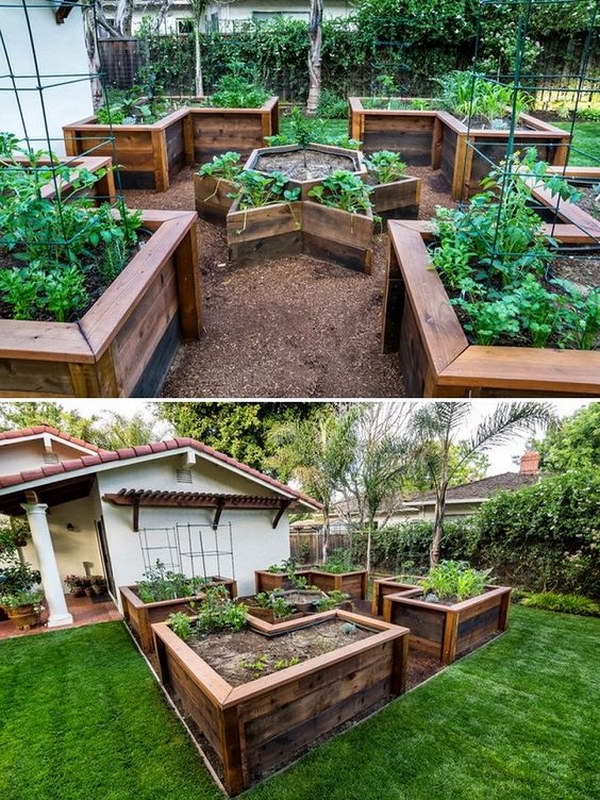Mastering Small Space Gardening, Raised Beds

Mastering Small Space Gardening: The Ultimate Guide to Raised Bed Gardening for Small Spaces
Have you ever wished for a lush garden but felt held back by your tiny urban lot? Well, it's time to turn that frown upside down because raised bed gardening for small spaces is here to save the day! Let's dive into the world of compact gardening and transform your petite plot into a thriving oasis.
Why Raised Beds?
Raised beds are like the superheroes of urban agriculture. They allow you to control soil quality, prevent soil compaction, and even deter pests. Plus, they're a lifesaver for those with back issues, as they reduce the need for bending and kneeling.
Getting Started: Planning Your Space-Saving Garden
Before you dive headfirst into compact gardening, take a moment to plan. Measure your space, consider sunlight exposure, and think about what you want to grow. Remember, the key to small-scale farming is maximizing every inch.
Choosing the Right Size and Shape
Raised beds come in all shapes and sizes. Rectangular beds are popular for their space-saving design, but don't be afraid to get creative with L-shaped or triangular beds if that suits your space better. Just remember, you want to be able to reach into the bed from all sides without stepping into it.
Material Matters
Wood is a popular choice for raised beds, but it's not the only option. You can also use metal, composite materials, or even repurposed items like old stock tanks. Each material has its pros and cons, so do your research before committing.
Building Your Raised Bed
Now that you've got your plan, it's time to get your hands dirty. Gardeners.com has a great guide on raised bed gardening to help you through the process. But here's a quick rundown:
- Gather your materials: You'll need your chosen bed material, soil, compost, and any necessary tools.
- Assemble the bed: This will depend on your chosen material, but it's usually as simple as screwing or nailing the sides together.
- Fill 'er up: Fill your bed with a mix of high-quality topsoil and compost.
Intensive Gardening: Maximizing Your Space
With your raised bed ready, it's time to plant. But don't just toss seeds willy-nilly. To make the most of your space-saving garden, consider techniques like succession planting and intercropping.
Succession Planting
Succession planting is like having a conveyor belt of crops. As soon as one crop is harvested, another is planted in its place. This keeps your garden productive all season long.
Intercropping
Intercropping is like playing Tetris with your plants. You plant fast-growing crops alongside slow-growing ones, or tall crops with short ones. The goal is to use every inch of space efficiently.
What to Grow in Your Small-Scale Farm
Just because your garden is small doesn't mean your plant choices are limited. Here are a few ideas:
Veggies
Salad greens, radishes, and herbs are all great choices for small spaces. They grow quickly and don't take up much room.
Fruits
Strawberries are a popular choice for small gardens. You can also try dwarf varieties of larger fruits like blueberries or even apple trees.
Flowers
Flowers like marigolds and nasturtiums not only look beautiful but also help deter pests. Plus, they attract beneficial pollinators.
Maintaining Your Raised Bed Garden
Caring for your raised bed gardening for small spaces is a lot like caring for any other garden. Water regularly, keep an eye out for pests, and don't forget to harvest your crops when they're ready.
Watering
Raised beds can dry out faster than in-ground gardens, so regular watering is a must. Consider installing a drip irrigation system to make watering a breeze.
Pest Control
Pests can be a pain, but there are plenty of organic methods to keep them at bay. Companion planting, beneficial insects, and row covers can all help protect your crops.
Troubleshooting Common Problems
Even the greenest thumbs run into problems now and then. Here are some common issues and how to fix them:
Poor Drainage
If your bed isn't draining well, try mixing in some perlite or vermiculite to improve soil structure.
Weeds
Weeds are inevitable, but you can keep them under control with regular weeding and a thick layer of mulch.
Disease
Disease can be a bit trickier, but practicing good garden hygiene—like cleaning tools and rotating crops—can help prevent outbreaks.
Conclusion
Raised bed gardening for small spaces is more than just a way to grow food—it's a way to connect with nature, even in the heart of the city. With a little planning, some creativity, and a lot of love, your tiny plot can become a lush, productive oasis. So, what are you waiting for? Get out there and start growing!
FAQs
Q: How deep should my raised bed be? A: The depth of your raised bed depends on what you want to grow. Most vegetables need at least 12 inches of soil, but root crops like carrots and potatoes prefer deeper beds.
Q: Can I put a raised bed on concrete? A: Yes, you can! Just make sure your bed is deep enough for your plants' roots and has good drainage.
Q: How do I keep critters out of my raised bed? A: Hardware cloth or chicken wire can help keep critters at bay. You can also try motion-activated sprinklers or natural repellents.
Q: What can I grow in the shade? A: Leafy greens like lettuce and spinach, as well as herbs and some flowers, can thrive in partial shade.
Q: How often should I replace the soil in my raised bed? A: With proper care, you shouldn't need to replace all the soil in your raised bed. Instead, top-dress with compost each year to replenish nutrients.
0 Response to " Mastering Small Space Gardening, Raised Beds"
Post a Comment